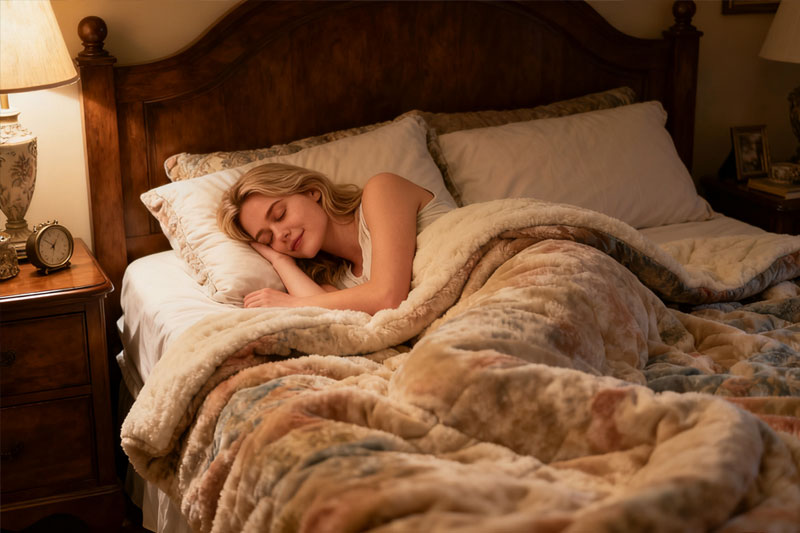Picture this: It’s that witching hour before bed, when your mind’s racing like a hamster on a wheel, and sleep feels like a distant dream. What if the simple act of wrapping yourself in a heavier blanket could flip the switch on your body’s natural sleep potion? That’s the promising revelation from a fresh study out of Sweden, where scientists at Uppsala University discovered that a weighted blanket doesn’t just feel comforting—it might actually crank up your melatonin levels, the hormone that whispers “time to snooze” to your brain.
Melatonin is that magical messenger your body pumps out as the sun dips low, signaling it’s time to wind down. Low levels? You’re staring at the ceiling till dawn. But in this clever experiment, published in the Journal of Sleep Research, researchers found that slipping under a weighted blanket—about 12% of your body weight—led to a whopping 32% bigger spike in salivary melatonin in the hour leading up to lights out, compared to a lighter cover. For the uninitiated, that’s like giving your internal clock a gentle nudge toward dreamland, potentially easing the grip of insomnia or that nagging bedtime anxiety so many of us wrestle with.
The study zeroed in on 26 young, healthy folks—15 guys and 11 gals—who took turns testing the blankets in a lab setting over two nights. One night, they cozied up with the weighted version (think a duvet stuffed just right, not some leaden nightmare), and the other with a featherweight stand-in at about 2.4% of their body weight. Saliva swabs tracked hormones like melatonin, the cuddle-hormone oxytocin, stress-spiking cortisol, and even markers for nervous system jitters. The verdict? Only melatonin perked up significantly with the heavier hug—no big shifts in the others, and no noticeable dips in how sleepy they felt or how long they actually slept. It’s a small crew, sure, but it’s the first hard evidence linking that deep-pressure sensation from a weighted blanket to a melatonin boost, which could explain why these bad boys have become a go-to for folks battling restless nights.
Why does this matter? We all know sleep’s the ultimate recharge button—miss it, and you’re foggy, cranky, and reaching for that third coffee by noon. Past research has hinted weighted blankets can dial down anxiety and amp up sleep quality, maybe by mimicking a firm swaddle that calms the nervous system. But until now, the “how” was a bit of a black box. “Our study may offer a mechanism explaining why weighted blankets may exert some therapeutic benefits, such as improved sleep,” says Christian Benedict, the senior author and an associate professor at Uppsala’s Department of Pharmaceutical Biosciences. His team, led by PhD student Elisa Meth, hopes this opens the door to bigger trials: Could the effect stick around night after night? Might it help more than just the young and healthy?
If you’re itching to try this at home (and who wouldn’t, after a string of zombie mornings?), here’s a quick guide to weighted blanket basics. Start by picking one that’s 7-12% of your body weight—too light, and it’s just a fancy throw; too heavy, and you’ll feel trapped. Layer it over your usual bedding for that enclosed, secure vibe, but keep your face and feet free for breathability. Pop it on about an hour before bed to let the magic build, and if you run hot, opt for breathable fabrics like cotton or bamboo. Pro tip: If you’re new to it, ease in with shorter sessions to avoid that “stuck in quicksand” overwhelm. And hey, chat with your doc first if you’ve got conditions like sleep apnea or circulation issues—they’re not one-size-fits-all.
Of course, this isn’t a cure-all; the study’s snapshot nature means we need more long-haul data to see if the melatonin love affair lasts. But in a world where sleep aids range from dubious pills to white-noise machines, a cozy blanket that might just hack your hormones? That’s the kind of low-tech win that feels like a warm embrace from science itself.
This article draws on research led by Elisa Meth and Christian Benedict from Uppsala University, published in the Journal of Sleep Research.

